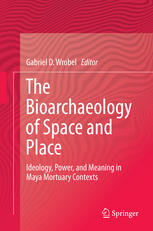

Most ebook files are in PDF format, so you can easily read them using various software such as Foxit Reader or directly on the Google Chrome browser.
Some ebook files are released by publishers in other formats such as .awz, .mobi, .epub, .fb2, etc. You may need to install specific software to read these formats on mobile/PC, such as Calibre.
Please read the tutorial at this link: https://ebookbell.com/faq
We offer FREE conversion to the popular formats you request; however, this may take some time. Therefore, right after payment, please email us, and we will try to provide the service as quickly as possible.
For some exceptional file formats or broken links (if any), please refrain from opening any disputes. Instead, email us first, and we will try to assist within a maximum of 6 hours.
EbookBell Team

5.0
110 reviewsThe Bioarchaeology of Space and Place investigates variations in social identity among the ancient Maya by focusing on individuals and small groups identified archaeologically by their inclusion in specific, discrete mortuary contexts or by unusual mortuary treatments. Utilizing archaeological, biological and taphonomic data from these contexts, the studies employ a variety of methodological approaches to reconstruct aspects of individuals’ life-course and mortuary pathways. Following this, specific mortuary behaviors are discussed in relation to their local or regional cultural setting using relevant archaeological, ethnohistoric, and/or ethnographic data in an effort to interpret their meaning within the broader social, political and economic contexts in which they were carried out. This volume covers a number of topics that are currently being debated in Maya archaeology, including identification and discussion of the role and extent of human sacrifice in Maya culture, the use of ancestors for maintaining political power, the mortuary use of caves by both elites and non-elites, ethnic distinctions within urban areas and the extent of movement of people between communities. Importantly, the papers in this volume attempt to test and move beyond static, dichotic categories that are often employed in mortuary studies in an effort to better understand the complex ways in which the Maya conceptualized and manipulated social identity. This type of nuanced case-study approach that incorporates historical, archaeological and theoretical contextualization is becoming increasingly important in the field of bioarchaeology, providing valuable sources of data where small, diverse samples impede populational approaches.